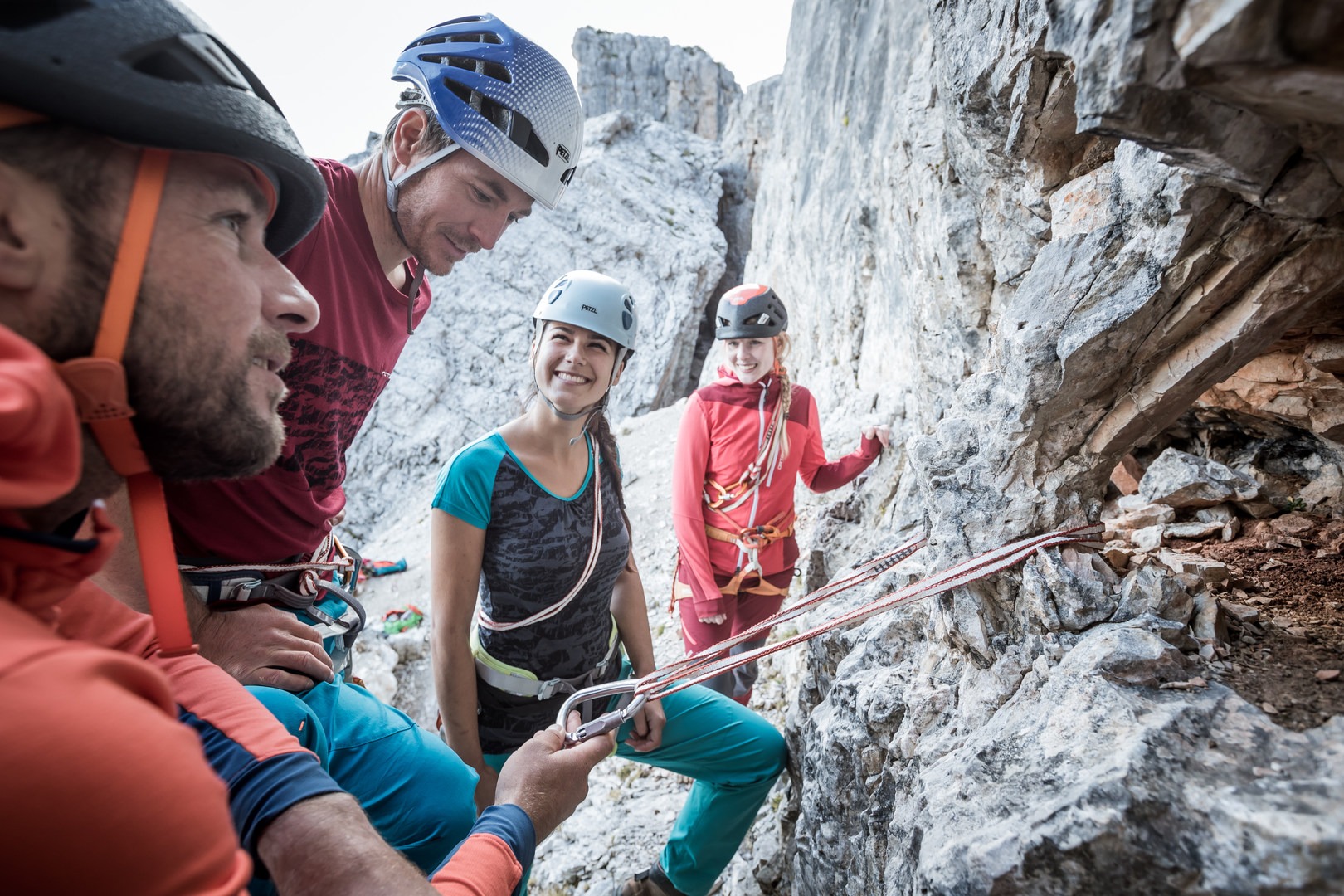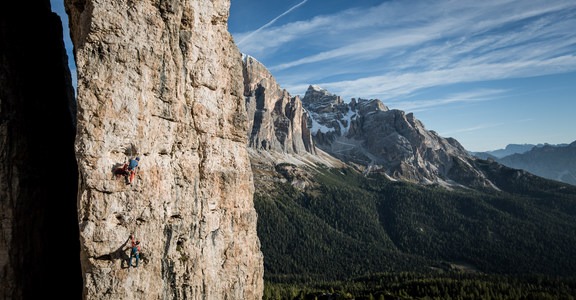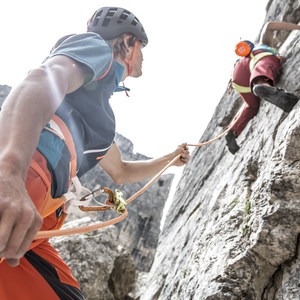Introduction to the alpine basics
Impressive and imposing, almost endless rock faces tower up into the sky. Climbing them requires determination, courage, self-confidence, physical strength, but above all knowledge. Alpine climbing is the ultimate discipline in climbing. When it comes to difficulty in the sport of climbing, huge rock faces really take it to the next level: Physically demanding climbs, a sense of orientation, route finding, often challenging protection techniques as well as physical and mental skills pose new challenges for alpine climbers and require well-founded knowledge.
The first chapter will introduce you to the alpine basics: We will look at the subjective and objective alpine dangers, including the weather and all the risks it entails. In terms of rock knowledge, we will get to know different types of rock, each requiring a different form of climbing and protection. In the last part of this chapter, we will take a closer look at the equipment every rope team needs.
Alpine dangers: subjective and objective dangers
Navigating high rock faces across several pitches – often far away from civilization – involves dangers. Dangers that can have disastrous consequences if ignored or if the wrong decisions are made.
In the mountains, we distinguish between the objective and subjective dangers that climbers face during alpine ventures. However, objective and subjective dangers cannot always be clearly separated based on the situation and actions. For example, someone who starts climbing a rock face despite a thunderstorm warning (objective danger), because he overestimates his abilities (subjective danger), affects the objective danger due to his own subjective judgment.
Objective dangers
Objective dangers are those posed by nature and the natural environment. Unlike subjective dangers, climbers usually have no direct influence upon objective dangers. However, with the right tactics, good planning and awareness they can be minimized.
- Weather: The weather in the mountains is a crucial factor on any alpine tour. Storms and other weather-related dangers can soon put a rope team in danger.
- Falling rocks: Falling rocks are often caused by melted snow, wind, animals or rope teams climbing ahead. The type of rock can aggravate or reduce the problem.
Subjective dangers
The leading cause of accidents on mountains is human error. Accidents are often the result of climbers’ overconfidence, ignorance or overdoing it. These dangers are referred to as subjective dangers, because they are caused by humans themselves. Self-reflection, caution and thorough training can minimize these dangers.
- Overestimating your own abilities: An incorrect self-assessment and a lack of knowledge about the tour are the most frequent causes of accidents.
- Misjudgment of the situation: Good, experienced mountaineers recognize misjudgments early on and have a plan B up their sleeves.
- Fear and panic situations: Fear in itself is not bad. On the contrary – it warns us and has an evolutionary purpose to protect us from dangers. The goal is therefore not to be fearless but to deal with fear and thus to recognize your own limits.
- Alpine terrain: Compared to sport climbing, additional factors come into play in alpine climbing: Seriousness (protection), poor orientation, exposure and the length of the tour can push climbers to their limits both psychologically and physically.
Check out the full series of Safety Academy Lab Rock videos below:
- Alpine basics
- Basic equipment for every climber
- Basic equipment for groups
- Additional equipment for groups
- Storms in the mountains
- Types of rock in the Alps
- Tour planning for alpine climbing
- Packing a backpack correctly
- Rope team procedures
- Knot techniques
- Belay using bolts
- Belay methods
- Anchors
- Coiling a climbing rope
- Rappelling
- What to do in an alpine emergency
- First aid on the mountain
- Rescue techniques while alpine climbing
- Bivouacking in an emergency situation
Visit ORTOVOX’s Safety Academy Lab Rock to view the climbing tutorials in their totality and test your knowledge with their fun and interactive quizzes.
Since the company was founded in 1980 in the south of Munich, ORTOVOX has stood for the highest possible protection during alpine activities. As pioneers in the avalanche safety field, we have played a key role in the development of emergency equipment for the mountains. Innovations such as the double-frequency avalanche transceiver and Smart Antenna Technology, and also targeted training measures, continue to be valuable contributions to making mountain sports a little bit safer and to saving lives.






Comments
Sign In and share them.